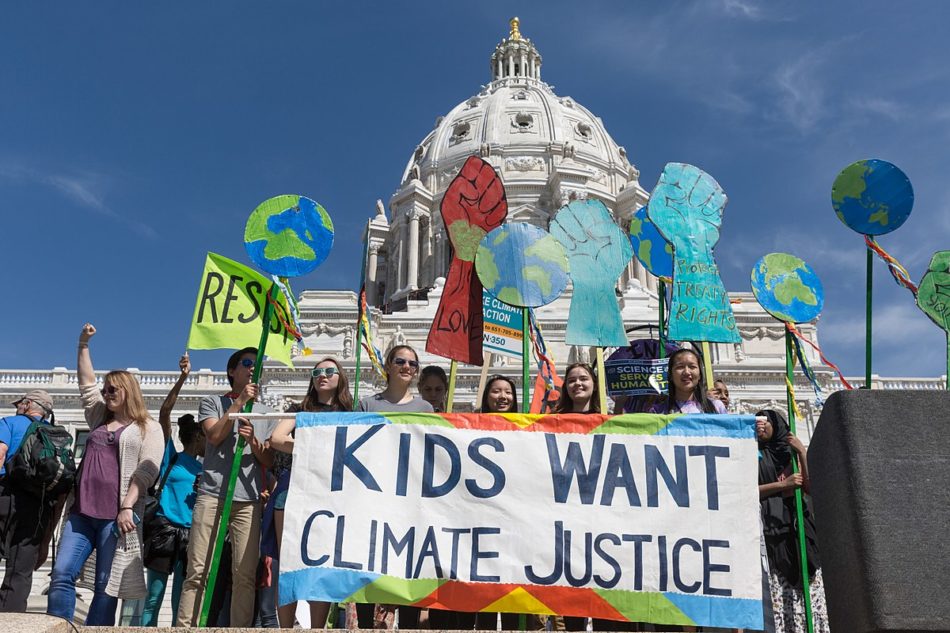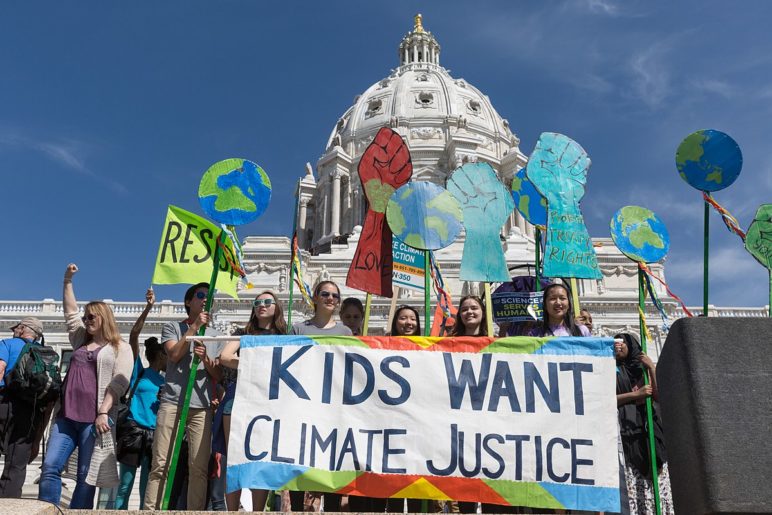A three-judge panel of the Ninth Circuit heard oral argument on June 4 in Juliana v. United States, the potentially groundbreaking climate lawsuit by 21 youth plaintiffs that was filed against the federal government close to four years ago.
It has been a long, convoluted journey since then: In just the last year, the case made two trips to the US Supreme Court and at one point, the government had motions simultaneously pending before the district court, the Ninth Circuit, and the Supreme Court, all attempting—in one way or another—to put the brakes on the litigation. (I’ve previously written about the legal maneuvering that brought the dispute to the Ninth Circuit.)
Background: As US Coasts Burn and Flood, Climate Kids’ Lawsuit Languishes in Limbo
Why has the government waged this unusually aggressive campaign to prevent the “climate kids” case from ever going to trial? As the federal district court judge in Oregon overseeing the case recognized, this is “no ordinary lawsuit.”
Plaintiffs have brought a number of claims grounded in the Constitution demanding that the federal government undertake a plan to “phase out fossil fuel emissions” and draw down excess carbon dioxide “so as to stabilize the climate system[.]” Consequently, this case has, technically speaking, set the government’s hair on fire.
You can watch the entire Ninth Circuit argument, but I would offer two cautions. First, for a number of reasons, it can be exceedingly difficult to predict an outcome based on questions from the bench. Oral arguments provide only a small, opaque window into judges’ thinking while much of the work in crafting their decision will happen behind closed doors.
Second, courtroom proceedings are rarely a riveting affair. Law school and years of legal practice have conditioned me to appreciate things like an extended colloquy over the appropriate standard of review (around 21:00) so I’m incapable of objectively evaluating the entertainment value here. You’ll have to make that assessment for yourself.
But, if you are daunted by the prospect of an hour’s worth of sustained legalese, I’ll highlight one notable exchange.
Judge Andrew Hurwitz asked the plaintiffs’ attorney, Julia Olson, whether Congress and the US President could step in and provide the plaintiffs with an adequate remedy. Olson naturally hesitated, before expressing doubt about that likelihood given the current political landscape.
Judge Hurwitz’s response (at minute 35:20) distills the essence of the issue facing the Ninth Circuit:
“Well, we may have the wrong Congress and the wrong president. That’s occurred from time to time over history. The real question for us is whether or not we get to intervene because of that. . . . You present compelling evidence that we have a real problem, compelling evidence that we have inaction by the other two branches of government. It may even rise to criminal neglect. The tough question for me, and I suspect for my colleagues, is: do we get to act because of that?”
Sometime in the next 6 months to a year, we should learn the judges’ answer.
And then? Even if the plaintiffs are successful at this stage, it’s virtually guaranteed that the government will appeal to the Supreme Court. By the time the Supreme Court would be able to conclude its review, we might have leaders in Washington, D.C., with a very different perspective on climate change, perhaps bringing Judge Hurwitz’s initial scenario closer to reality.
Archive: Can ‘Climate Kids’ Sue the Federal Government for Climate Policies That Violate the Constitution?
Michael Mayer practiced environmental law in the Northwest for close to a decade and now teaches climate change law at Seattle University School of Law.










Steve Erickson
Hurwitz’s statement, quoted in this article, pretty much sums up the issue for the judges when also considered with the question of whether they can require affirmative action by the government as requested (i.e. a plan to address climate change). Usually, constitutional claims request relief by striking down an allegedly unconstitutional action (i.e a law or procedure). Here, the appellants are basically challenging the lack of action. This also occurs sometimes, but usually in the context of, for example, failure to conduct rule making to fulfill a statutory duty or follow a prescribed procedure. Olsen tried to address this by pointing to a statutory requirement to grant LNG export licenses with no review, which I thought was weak since the suit does not directly challenge that.
Ultimately, the judges have two decisions. The first is whether the Climate Kids have standing to bring their claims. Reading questions asked by the judges is like reading tea leaves, but it seemed to me that their sticking point here was whether they had the power to fashion an appropriate remedy. In other words, whether the claims are redressable. This is the final test for standing: whether the court can provide relief. And this situation is very different than, say, a challenge to a coal leasing program on federal land. The Climate Kids may meet every other test for standing, but if the court can’t give them relief “do not pass go.”
The second decision is simply an extension of that: what would effective relief be. The Climate Kids are asking for the courts to order the executive branch to actually address the ongoing climate destabilization emergency by planning. But that implies possible further review and retention of jurisdiction by the court over the adequacy of the “plan,” a posture potentially fraught with all sorts of separation of powers issues.
Were there a clear direct constitutional right to a healthy environment, etc., this would be a slam dunk. But because the asserted right is derivative (like, i.e., the right to privacy) the court is being asked to make a big leap. I suspect that the judges are really thinking a whole whole lot about how deep and wide the chasm is that they are being asked to jump over.
Don Steinke
Julia Olson said, the case was not about a failure to act, but that the government is acting affirmatively by leasing public lands for oil and gas extraction, receiving revenue from the leases and in general promoting the industry.
(and those acts have occurred in all administrations.)
Michael Mayer
I think you are correct: the plaintiffs have made clear that they are aggrieved by the government’s affirmative acts. As Julia Olson concedes at the argument, pure inaction would not support the plaintiffs’ Fifth Amendment claim. But my sense is that because the action / inaction line can be blurry, the plaintiffs have also pursued a “state-created danger” theory (discussed around min. 25:10). In other words, even if the government does not play a direct role in the emissions of some third-parties, its actions were critical in getting the fossil fuels to that point by promoting and facilitating their use. Despite Olson’s protest, Judge Hurwitz appears intent on characterizing the plaintiffs’ claims as directed at government inaction, which may turn out to be a critical point.
R Small
There is a great podcast (hosted by Ambar Espinoza) covering this case called No Ordinary Lawsuit. It translates the legalese into accessible language and has interviews with the individual kids filing the suit on why they were motivated to do this. They make a new episode any time there’s a new development in the case. https://www.noordinarylawsuit.org/